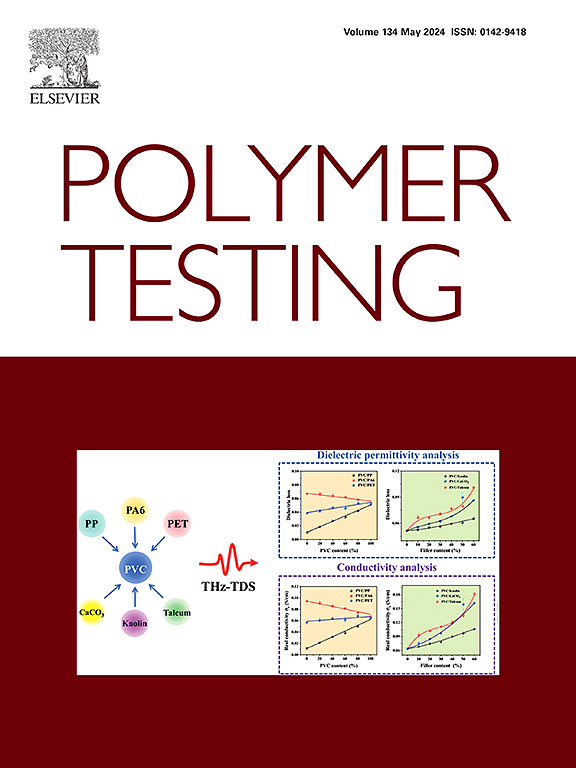O2-self-supplying and glutathione-depleting scaffold for synergistic cancer therapy
IF 5
2区 材料科学
Q1 MATERIALS SCIENCE, CHARACTERIZATION & TESTING
引用次数: 0
Abstract
Photodynamic therapy (PDT) has great potential for tumor therapy because of its non-invasive and high selectivity. However, the therapeutic effect of PDT is critically restricted by hypoxia and glutathione (GSH) overexpression in the tumor microenvironment (TME). In this work, CeO2 with catalase and peroxidase dual enzyme activities was loaded on Ti3C2 nano-sheet, and the nanosystem was then introduced in poly-L-lactic acid (PLLA) and prepared into bone scaffold using selective laser sintering technology. Specifically, CeO2 alleviates hypoxia through its catalase enzyme activity, which promotes the continuous photodynamic process. CeO2 also consumes over-expressed GSH through its redox reaction and amplifies the oxidative stress in TME, thus improving the curative effect of PDT. On the other hand, the photothermal effect of scaffold can not only generate heat to kill tumor cells, but also enhance the activity of nanoenzyme, and the catalase activity enhanced by photothermal effect is fed back to PDT, forming a two-way promotion. The results indicated that the concentration of oxygen in PLLA/Ti3C2-CeO2 scaffold group was 9.76 mg/L higher, and the concentration of singlet oxygen (1O2) and hydroxyl radical (·OH) was respectively increased by 60 % and 170 %, compared with the PLLA/Ti3C2 scaffold. Moreover, the PLLA/Ti3C2-CeO2 scaffold showed a higher GSH consumption rate, indicating that it could consume the overexpressed GSH. Therefore, the Ti3C2 nano-sheet loaded with CeO2 could combine the dual enzyme activities, photodynamic and photothermal effect to enhance the tumor therapy with a tumor growth inhibitory effect of approximately 88.8 %. In summary, introducing the Ti3C2 nanosystem loaded with nanozyme into PLLA scaffold is a promising strategy to develop bone scaffold with multimodal anti-tumor function.
求助全文
约1分钟内获得全文
求助全文
来源期刊

Polymer Testing
工程技术-材料科学:表征与测试
CiteScore
10.70
自引率
5.90%
发文量
328
审稿时长
44 days
期刊介绍:
Polymer Testing focuses on the testing, analysis and characterization of polymer materials, including both synthetic and natural or biobased polymers. Novel testing methods and the testing of novel polymeric materials in bulk, solution and dispersion is covered. In addition, we welcome the submission of the testing of polymeric materials for a wide range of applications and industrial products as well as nanoscale characterization.
The scope includes but is not limited to the following main topics:
Novel testing methods and Chemical analysis
• mechanical, thermal, electrical, chemical, imaging, spectroscopy, scattering and rheology
Physical properties and behaviour of novel polymer systems
• nanoscale properties, morphology, transport properties
Degradation and recycling of polymeric materials when combined with novel testing or characterization methods
• degradation, biodegradation, ageing and fire retardancy
Modelling and Simulation work will be only considered when it is linked to new or previously published experimental results.
 求助内容:
求助内容: 应助结果提醒方式:
应助结果提醒方式:


